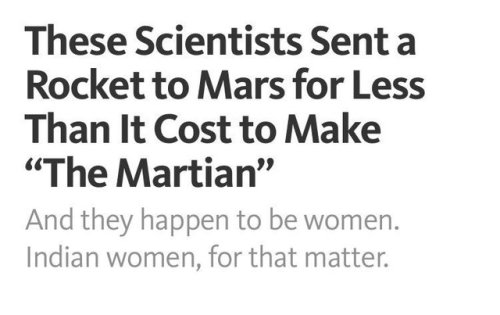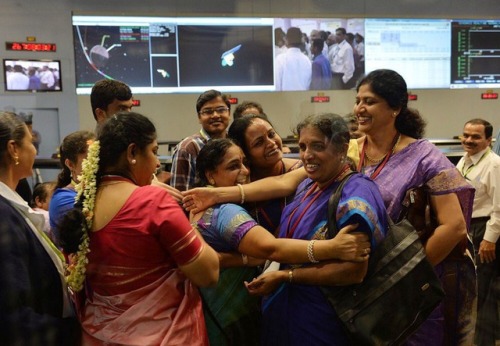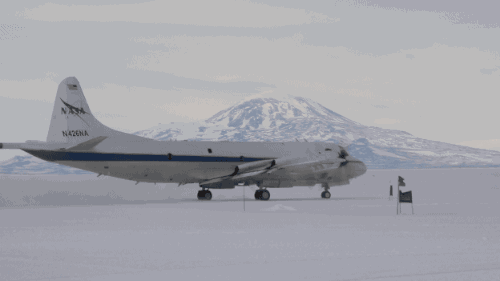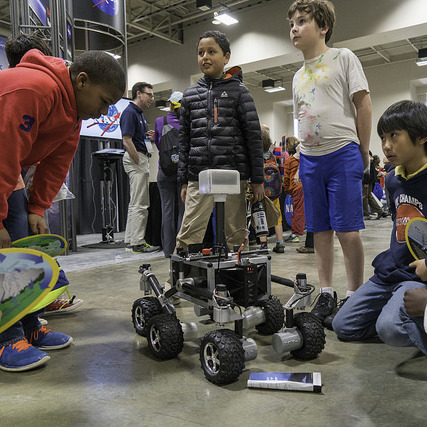63 posts
Latest Posts by insertgeniuspunhere - Page 2
Since I’m not seeing her name nearly enough on the press, let’s give the attention Katie Bouman deserves. Thanks to her, we are now possible to see the first ever image of a black hole, something that people talked 200 years ago for the first time. It’s no longer a myth. We are girls and we can be whatever we want to be. Einstein would be proud of you, Katie. Thank you!


Here you can see a huge stack of hard drives she used for Messier 87’s black hole image data.

Shubh Divali!
Put John Mulaney on Brooklyn Nine-Nine you cowards



The Trials of Apollo by Rick Riordian

Tropical the island breeze All of nature wild and free This is where I long to be Happy Earth Day!🌎

The Martian by Andy Weir

Trying to get some sleep, we'll be driving through a dream

I wish i was royal but i'm not

When it feels like the world's gone mad, and there's nothing you can do about it...

Some rough advice for the real world from @edwardspoonhands. (x)
(also, whew, this is a LONG quote)

Sorrow; The unpredictable has found a hand to hold

We’re never going back to okay

“People aren’t born good or bad. Maybe they’re born with tendencies either way, but it’s the way you live your life that matters” - Simon Lewis

Stars Shine Darkly

The Mortal Instruments-City Of Glass

Mother of biology.
If there’s a Stairway to Heaven and a Highway to Hell, it says a lot about the expected traffic.
Did you hear about the two asteroids having relationship problems? Just as they were entering the atmosphere they broke up.
What do you call a young musician?
A minor
do emo shadowhunters wear white clothes?
Eclipse Across America
August 21, 2017, the United States experienced a solar eclipse!

An eclipse occurs when the Moon temporarily blocks the light from the Sun. Within the narrow, 60- to 70-mile-wide band stretching from Oregon to South Carolina called the path of totality, the Moon completely blocked out the Sun’s face; elsewhere in North America, the Moon covered only a part of the star, leaving a crescent-shaped Sun visible in the sky.

During this exciting event, we were collecting your images and reactions online.
Here are a few images of this celestial event…take a look:

This composite image, made from 4 frames, shows the International Space Station, with a crew of six onboard, as it transits the Sun at roughly five miles per second during a partial solar eclipse from, Northern Cascades National Park in Washington. Onboard as part of Expedition 52 are: NASA astronauts Peggy Whitson, Jack Fischer, and Randy Bresnik; Russian cosmonauts Fyodor Yurchikhin and Sergey Ryazanskiy; and ESA (European Space Agency) astronaut Paolo Nespoli.
Credit: NASA/Bill Ingalls

The Bailey’s Beads effect is seen as the moon makes its final move over the sun during the total solar eclipse on Monday, August 21, 2017 above Madras, Oregon.
Credit: NASA/Aubrey Gemignani

This image from one of our Twitter followers shows the eclipse through tree leaves as crescent shaped shadows from Seattle, WA.
Credit: Logan Johnson

“The eclipse in the palm of my hand”. The eclipse is seen here through an indirect method, known as a pinhole projector, by one of our followers on social media from Arlington, TX.
Credit: Mark Schnyder

Through the lens on a pair of solar filter glasses, a social media follower captures the partial eclipse from Norridgewock, ME.
Credit: Mikayla Chase

While most of us watched the eclipse from Earth, six humans had the opportunity to view the event from 250 miles above on the International Space Station. European Space Agency (ESA) astronaut Paolo Nespoli captured this image of the Moon’s shadow crossing America.
Credit: Paolo Nespoli

This composite image shows the progression of a partial solar eclipse over Ross Lake, in Northern Cascades National Park, Washington. The beautiful series of the partially eclipsed sun shows the full spectrum of the event.
Credit: NASA/Bill Ingalls
In this video captured at 1,500 frames per second with a high-speed camera, the International Space Station, with a crew of six onboard, is seen in silhouette as it transits the sun at roughly five miles per second during a partial solar eclipse, Monday, Aug. 21, 2017 near Banner, Wyoming.
Credit: NASA/Joel Kowsky
To see more images from our NASA photographers, visit: https://www.flickr.com/photos/nasahqphoto/albums/72157685363271303
Make sure to follow us on Tumblr for your regular dose of space: http://nasa.tumblr.com


The (Shipped) Gold Standard || Fall Out Boy

For diamonds do appear to be, just like broken glass to me


hidden figures vol. 2
2016 Sets Global Temperature Record
We just experienced the hottest year on record…again.

2016 was hotter than 2015, the previous record. And 2015 hotter than 2014, the previous record year.
These record temperatures are all part of a warming trend that dates back to the late-19th century, largely caused by human emissions of carbon dioxide and other gases into the atmosphere.

A lot of this warming trend has been in the last 35 years. In fact, 16 of the 17 warmest years on record have been since 2001.
To help us gather this data, planes and boats travel out from Antarctic research stations to gather information from the Arctic region, in addition to space-based observatories.

Scientists at our Goddard Institute for Space Studies analyze data from 6,300 weather stations, observations of sea surface temperature and Antarctic research stations, all to determine how the average surface temperature is changing.

Scientists at the National Oceanic and Atmospheric Administration separately analyze the same data to track global temperature.
The two agencies reached the same conclusion about 2016’s record-setting heat.
Variations in local weather mean parts of the globe did not experience a record-setting year. Some places still had snow, cold weather and below-record temperatures, but the overall global average was higher than any previous year.

For instance, according to NOAA the average temperature in the 48 contiguous United States was not quite as high as in 2015, which still holds the record.

A combination of space- and land-based measurements gives us a unique perspective on Earth, the only planet we know of that supports life.
To learn more about the global temperature record or see how average surface temperature for individual months, visit: http://data.giss.nasa.gov/gistemp/
Make sure to follow us on Tumblr for your regular dose of space: http://nasa.tumblr.com
Okay, so the first song of the musical is actually very sad once you listen to the lyrics? Like the music is upbeat and fun but the lyrics are absolutely heartbreaking. Just with this song you get to know Percy’s character in a way no movie could ever do. All he wants is someone, he wants to be loved, he wants to be accepted but no matter what he does, ‘you’re always to blame’ he spends the whole song telling you he is a good kid and a good son but no one believes, to the point he doesn’t believe it either ‘I swear I’m a good kid, yes I’m good for nothing at all.’
This is Percy telling you all his insecurities, his fears, he’s a 12 years old who thought he finally found a safe place but now everybody is blaming him ‘no one will ever take my side’ he doesn’t have friends, he doesn’t have anyone because his mom is no longer there and he doesn’t have a home and then it comes the more heartbreaking part, when you can feel the sadness in his voice while he sings ‘I swear I never stole anything, I never meant to hurt anyone. I swear, I swear that I’m a good kid, a good kid.’ and the you have the final blow to you heart that leaves you crying ‘All I need is one last chance to prove I’m good enough for someone.’
Excuse me I gotta go and cry
Five NASA Technologies at the 2017 Consumer Electronics Show
This week, we’re attending the International Consumer Electronics Show (CES), where we’re joining industrial pioneers and business leaders from across the globe to showcase our space technology. Since 1967, CES has been the place to be for next-generation innovations to get their marketplace debut.
Our technologies are driving exploration and enabling the agency’s bold new missions to extend the human presence beyond the moon, to an asteroid, to Mars and beyond. Here’s a look at five technologies we’re showing off at #CES2017:
1. IDEAS
Our Integrated Display and Environmental Awareness System (IDEAS) is an interactive optical computer that works for smart glasses. The idea behind IDEAS is to enhance real-time operations by providing augmented reality data to field engineers here on Earth and in space.

This device would allow users to see and modify critical information on a transparent, interactive display without taking their eyes or hands off the work in front of them.

This wearable technology could dramatically improve the user’s situational awareness, thus improving safety and efficiency.

For example, an astronaut could see health data, oxygen levels or even environmental emergencies like “invisible” ethanol fires right on their helmet view pane.

And while the IDEAS prototype is an innovative solution to the challenges of in-space missions, it won’t just benefit astronauts—this technology can be applied to countless fields here on Earth.
2. VERVE
Engineers at our Ames Research Center are developing robots to work as teammates with humans.

They created a user interface called the Visual Environment for Remote Virtual Exploration (VERVE) that allows researchers to see from a robot’s perspective.

Using VERVE, astronauts on the International Space Station remotely operated the K10 rover—designed to act as a scout during NASA missions to survey terrain and collect science data to help human explorers.

This week, Nissan announced that a version of our VERVE was modified for its Seamless Autonomous Mobility (SAM), a platform for the integration of autonomous vehicles into our society. For more on this partnership: https://www.nasa.gov/ames/nisv-podcast-Terry-Fong
3. OnSight
Did you know that we are leveraging technology from virtual and augmented reality apps to help scientists study Mars and to help astronauts in space?

The Ops Lab at our Jet Propulsion Laboratory is at the forefront of deploying these groundbreaking applications to multiple missions.

One project we’re demonstrating at CES, is how our OnSight tool—a mixed reality application developed for the Microsoft HoloLens—enables scientists to “work on Mars” together from their offices.

Supported by the Mars 2020 and Curiosity missions, it is currently in use by a pilot group of scientists for rover operations. Another HoloLens project is being used aboard the International Space Station to empower the crew with assistance when and where they need it.

At CES, we’re also using the Oculus Rift virtual reality platform to provide a tour from the launchpad at our Kennedy Space Center of our Space Launch System (SLS). SLS will be the world’s most powerful rocket and will launch astronauts in the Orion Spacecraft on missions to an asteroid and eventually to Mars. Engineers continue to make progress aimed toward delivering the first SLS rocket to Kennedy in 2018.
4. PUFFER
The Pop-Up Flat Folding Explorer Robot, PUFFER, is an origami-inspired robotic technology prototype that folds into the size of a smartphone.

It is a low-volume, low-cost enhancement whose compact design means that many little robots could be packed in to a larger “parent” spacecraft to be deployed on a planet’s surface to increase surface mobility. It’s like a Mars rover Mini-Me!

5. ROV-E
Our Remote Operated Vehicle for Education, or ROV-E, is a six-wheeled rover modeled after our Curiosity and the future Mars 2020 Rover.

It uses off-the-shelf, easily programmable computers and 3D-printed parts. ROV-E has four modes, including user-controlled driving to sensor-based hazard-avoidance and “follow me” modes. ROV-E can answer questions about Mars and follow voice commands.

ROV-E was developed by a team of interns and young, up-and-coming professionals at NASA’s Jet Propulsion Laboratory who wanted to build a Mars rover from scratch to help introduce students and the public to Science, Technology, Engineering & Mathematics (STEM) careers, planetary science and our Journey to Mars.
Make sure to follow us on Tumblr for your regular dose of space: http://nasa.tumblr.com



